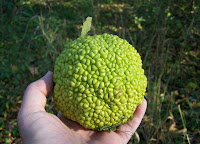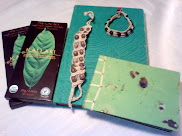Justin: John, we have to talk.
Andon: You sent us into a warzone man!
John: Whaddaya mean?
Andon: We're basically flagging every tree in that forest.
Justin: Yeah, I'd say its about 95% lacebark. (one of the elms we're flagging) We're thinking you're gonna have to doze it.
John: Is it that bad?
Andon: Yeah, its really bad. Not only are the trees bad, but even the understory is all serrisia and Honeysuckle. Doze it or burn it, but there's no way you're gonna go in there and cut all that down individually.
John: Whaddaya mean burn it?
Andon: You know, burn it. What, you can't do prescribed burns on a forest here?
(Perplexed looks from both of them)
Andon: Ok, well doze it then.
John: Its really that bad?
Justin: Oh yeah, its that bad.
Andon: Its a warzone I'm tellin' ya!
After we convinced John that it was that bad, and I learned about the limits of prescribed burning in an urban setting, we wen't back out. Justin kept flagging everything ever, and I tried to rope off the area that we think needs to be bulldozed. It was one of the hardest things I've ever done. Of course, there were areas where it was simple to tell where the invasion came in, but other areas had some good native trees mixed in with all the bad, and making the decision of at what point to give up on a forest was tough! The main problem was that there were two

When John joined us in the field, he agreed with us that the first area, with five to ten year old trees, should be bulldozed, but proceeded to give us a little lesson on the limitations of bulldozing. For the second zone, which had more like twenty or thirty year old trees, he said bulldozing would just create more of a problem with disposal of the stuff you take out. We'll probably end up using some type of selective cutting in that area, but we don't know what to do with the wood and brush. Robert, Bruce's summer hire and a really quiet kid, had the idea of using it for mulch, which I rather like. Over the next few days, we'll come up with a plan for what to do in that area.
Also, I had another one of those moments today, where I'm like "Dude, I'm making management reccomendations that will be used on a real forest!!!" Awesomeness.



